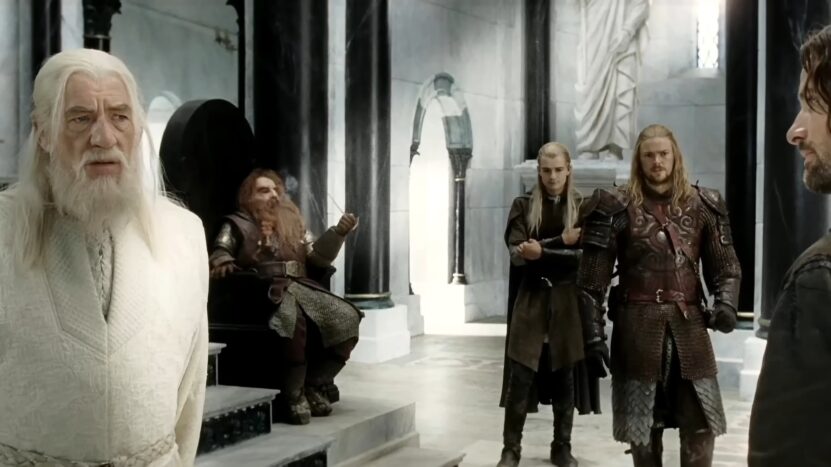We all agree that secondary characters may not be the heroes in the spotlight, but their roles in the story are no less critical. They breathe life into your narrative, drive the plot forward, and reveal different aspects of your main character.
But what truly defines a secondary character, and how do you effectively use them in your story?
Today, we’ll explain their significance in more detail, to provide actionable tips for writers at all levels.
What’s Their Role?

There are characters aside from the main protagonist and antagonist that play key roles in advancing the plot. They can be friends, family, coworkers or even opponents of the central figures.
These supporting players help shape the story’s events and environment. Their actions and counsel frequently steer the protagonist’s choices and behavior. Secondary characters also move conflicts forward, resolving them or bringing needed information to light.
Take Ron Weasley and Hermione Granger from the Harry Potter series. They regularly aid the title character in battles against dark forces. Additionally, interactions between protagonists and supporting roles reveal character traits. Through this, we see how central figures develop strengths and weaknesses.
Supporting characters likewise contribute to building the narrative world. They represent various societal, cultural or environmental aspects, adding richness and layers to the setting itself. Without their perspectives and presence, stories would lack fullness and depth.
How to Create Memorable Secondary Characters

Individualize Their Qualities
Each supplemental player requires unique traits to distinguish themselves. Personality emerges through dialogue, acts, appearance, or origin stories.
Purpose Drives Each Presence
All within a tale should be made. Whether plot advancement aid, humor, or regarding lead figures something unveils, supporting players meaningfully should partake.
Origins Shape Who They Are
Though less than lead, histories around supplemental roles reality, and resonance can lend. Past deed’s motivations for behaviors may clarify or inform stances.
Unique Voices Through Exchange
Special speech, word choices or tones through exchanges identities may express. Feelings, roots, or moods these reveal. Ensure converse advances without filler feeling induced.
Vivid yet Concise Depictions
Portraits too assist separation and liveliness. Yet descriptions lengthy refrain – focus on marks their essences that seize.
Internal Struggles Like All Others
As with leads, supplemental souls too battle the inner face. Such complexities add dimension to humanizing and relatability. Or sub-plot introduction another layer weaves within the limnings.
How to Utilize Them Effectively

Use these characters to create tension and conflict or to help resolve it. They can provide information or resources, create obstacles, or serve as allies or enemies to the protagonist.
Their actions should influence the plot and affect the protagonist’s journey, especially in a nonlinear plot where their interactions may reshape the narrative structure unpredictably.

The key to using secondary characters effectively is balance. You don’t want them to overshadow the protagonist or take over the story.
Instead, they should complement the main characters and enhance the narrative. Be mindful not to introduce too many secondary characters, as it can confuse the reader and dilute the story’s focus.
While they might not have as dramatic an arc as your protagonist, they should still exhibit consistency and growth. Even small changes in their attitudes, behaviors, or relationships can make them more engaging and believable.
Create Dynamic Relationships
The relationships between your protagonist and secondary characters are crucial. These relationships can be complex and multi-dimensional, just like in real life.
They can evolve over time, reflecting the growth and change in the main character. Think of the secondary characters as mirrors reflecting different facets of your protagonist.
Avoid Stereotypes
Stereotypes can make your secondary characters feel flat and uninteresting. Try to infuse them with quirks, flaws, and strengths that make them unique. Remember, even though they’re not in the spotlight, they’re still individuals with their own stories.
The Layers of Secondary Characters

The Mentor
The Mentor is a common type of secondary character, often seen in stories involving a hero’s journey. They offer guidance, wisdom, and sometimes even magical help to the protagonist.
Gandalf in J.R.R. Tolkien’s Lord of the Rings series, and Obi-Wan Kenobi in Star Wars, exemplify this role.
The Mentor character can reveal the protagonist’s potential, provide them with tools or knowledge, or even challenge them to face their fears.
The Sidekick
The Sidekick often provides a contrast to the protagonist, showcasing their strengths and weaknesses. They can offer comic relief, moral support, or a sounding board for the protagonist. Dr. John Watson in Arthur Conan Doyle’s Sherlock Holmes series is a classic example of a sidekick.
The relationship between the protagonist and their sidekick can offer rich opportunities for character development and plot progression.
The Love Interest
A Love Interest can serve as a significant secondary character, driving the protagonist’s motivations and influencing their decisions. This character can add an emotional layer to the narrative, and their relationship with the protagonist can introduce conflicts, dilemmas, or plot twists.
Elizabeth Bennet in Jane Austen’s Pride and Prejudice starts as a secondary character, a love interest, but her role evolves to become much more central to the narrative.
In Summary
Secondary characters may not take center stage, but their contribution to the narrative is vital. They bring depth to the story, push the plot forward, and offer insights into the protagonist’s character.
Crafting effective secondary characters requires careful thought and deliberate design, but the payoff is immense. They can make your story more engaging, dynamic, and richly textured, leaving a lasting impression on your readers.
I’m Anastasia, and I’ve just wrapped up my postgraduate studies in literature. I absolutely love writing books. It’s my way of weaving new worlds and breathing life into the characters that keep me up at night. Literature isn’t just a field of study for me; it’s a canvas where I paint with words. Through my writing, I hope to connect with others who share my love for storytelling and to contribute something meaningful to the literary world.








